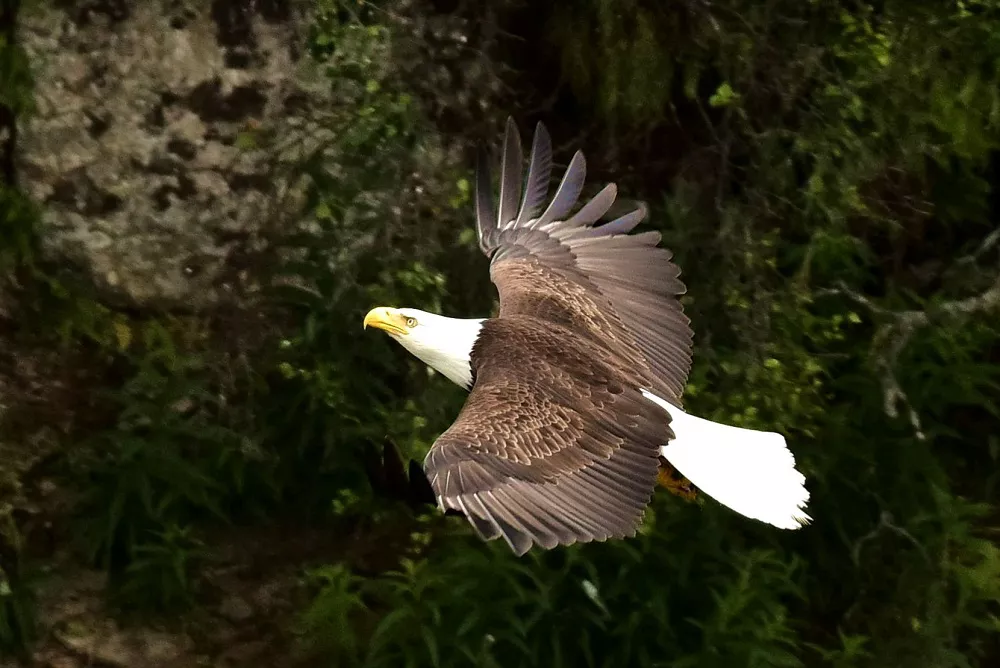The bald eagle is a majestic bird of prey that is native to North America. Known for its impressive size and striking appearance, the bald eagle has long been a symbol of strength and freedom in the United States. But just how big is a bald eagle?
On average, a bald eagle measures between 28 and 40 inches in length, with a wingspan of 6 to 7 feet. Females are typically larger than males, with a weight range of 10 to 14 pounds compared to males who weigh between 7 to 10 pounds.
Despite their impressive size, bald eagles are surprisingly agile in flight, able to reach speeds of up to 50 miles per hour when diving to catch their prey. Their wings are designed for soaring and gliding, with a special joint that allows them to change the shape of their wings and adjust to different wind conditions. Bald eagles are also capable of soaring at heights of up to 10,000 feet above sea level.
The bald eagle’s striking appearance is due in part to its distinctive white head and tail feathers, which contrast with its dark brown body. Juvenile bald eagles are brown all over and do not develop their signature white head and tail feathers until they are four to five years old.
Bald eagles are apex predators and feed primarily on fish, but they also prey on small mammals, birds, and reptiles. They are known for their powerful talons, which can exert a force of up to 400 pounds per square inch, allowing them to catch and carry prey that is much larger than themselves.
The bald eagle’s population was once threatened by hunting, habitat destruction, and the use of pesticides like DDT. However, thanks to conservation efforts and the ban on DDT, the bald eagle population has rebounded in recent years. Today, bald eagles can be found throughout much of North America, including in Alaska, Canada, and the lower 48 states.
In conclusion, the bald eagle is an impressive bird of prey with a wingspan of up to 7 feet and the ability to reach speeds of up to 50 miles per hour. Their distinctive appearance, powerful talons, and apex predator status make them a symbol of strength and freedom in North America. While they were once threatened by human activities, conservation efforts have helped to protect the bald eagle population and ensure that this iconic species will continue to soar through the skies for generations to come.


 Facebook
Facebook  Instagram
Instagram  Youtube
Youtube 